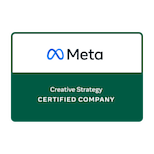We’d all like to think that our target market could be simply described as “everyone.” However, that simply is not true. The truth is, not everyone will be interested in what you’re promoting. When spending money on various marketing channels, it is important to not waste dollars on people who are unlikely to respond to your ad. This is especially important in an increasingly digital world where more access to more people presents a greater chance for wasted impressions.
Take a second to think about who your market really is. Another way to think of this is what does your typical client or donor look like? The more you know about your “regulars” and their similarities, the more specifically we can identify what traits tie them to together (aside from their love of you, of course). This is why in our everyday life we run into data-capturing tools — surveys, lead forms, websites that require you to log into Facebook or your Gmail account in order to have access. Efficient marketing thrives off of data that we willingly submit.
Once we have a great idea of who our market is and what our market looks like, we can use tools to direct our efforts to those individuals who are most likely to engage. In traditional marketing this has been relatively simple — a certain television show or radio station or a particular section of the newspaper — but there is no way in these mediums to filter out people with no interest in what you’re promoting. In the digital space, we can get a lot more specific.
Let’s take a look at Facebook behavior. Profiles are built with locations, education levels, marital statuses, vocations, and other criteria. Users show interest in certain things by likes, shares, comments, clicks, joining groups, and reading/bookmarking articles. Every item/action is a tool that marketers use to build a persona for targeting. We then meet people where they are: on Facebook! Users tell us what they like and we deliver ads accordingly. We can even import our known customers and Facebook has the capacity to study all of these attributes, identify similarities, and build lookalike audiences to enlarge our market. Other digital marketing outlets, mainly social media and search engines, more or less follow the same process. Below is an illustration of how this process works for a sports store:

Be careful not to overly limit yourself. Having too few or specific identified market traits will leave us with too few people to see our message. And repeatedly delivering an ad to the same people will cause ad fatigue and turn people away. At the same time, we cannot be too broad in our research either. Remember — not everybody will take an interest in what you’re promoting. Finding the right mix is both a science and an art that takes lots of research and practice.
It is important to continuously study to whom you are marketing. When it comes to marketing budgets, it is important to be as efficient as possible with your efforts. The more strategic you can be when marketing, the better results you could see. It all starts with knowing your target market as best you can.











